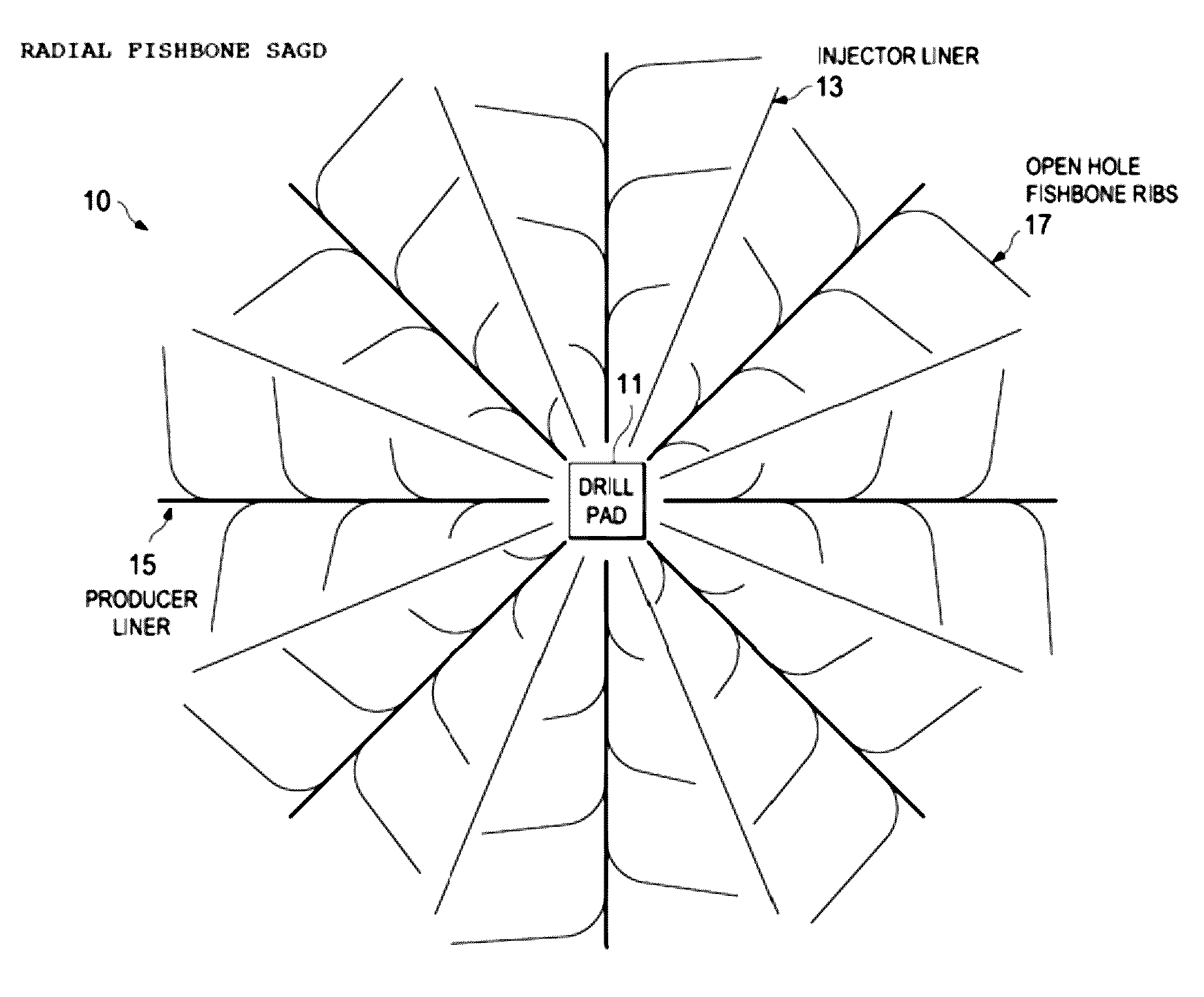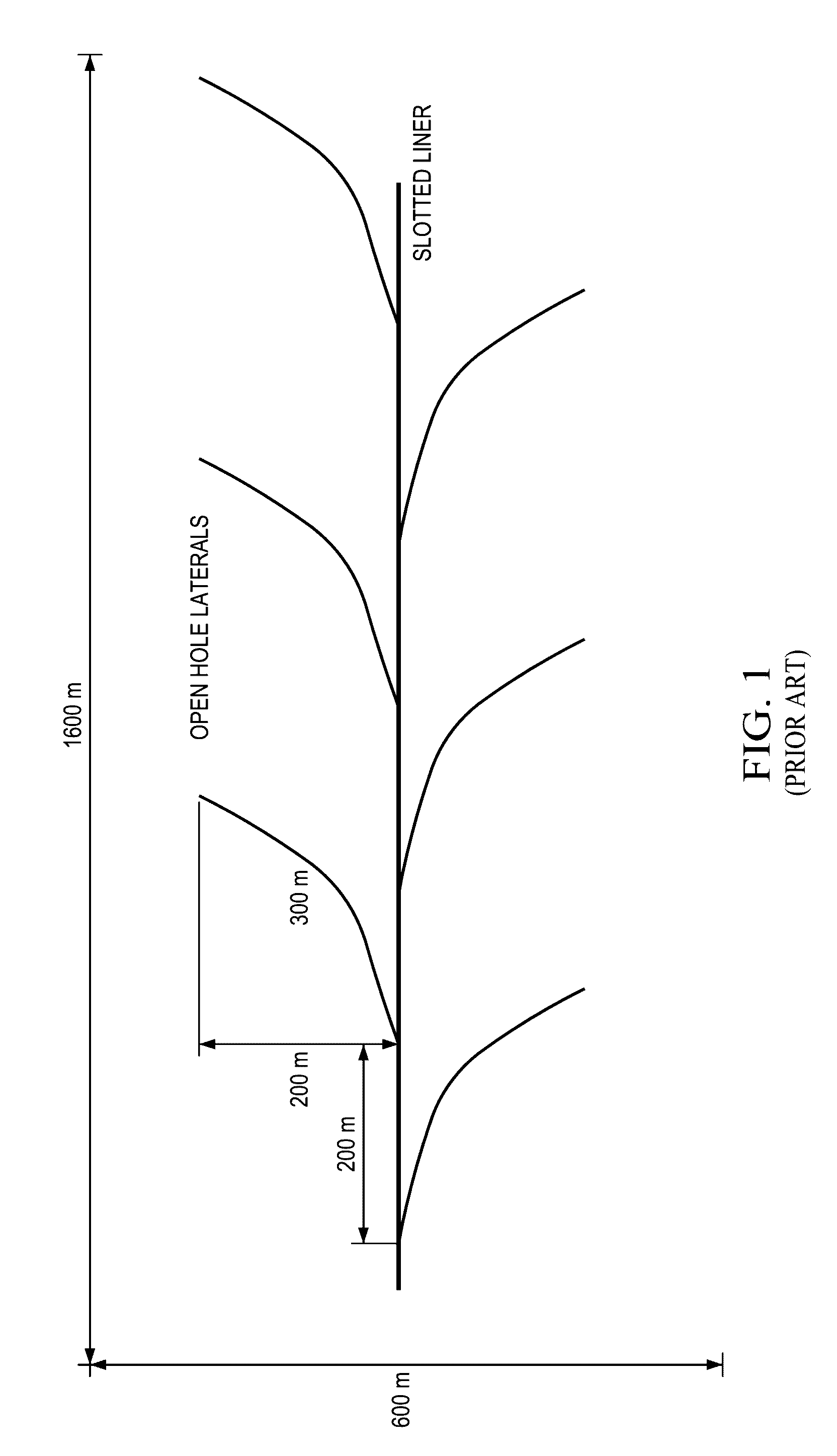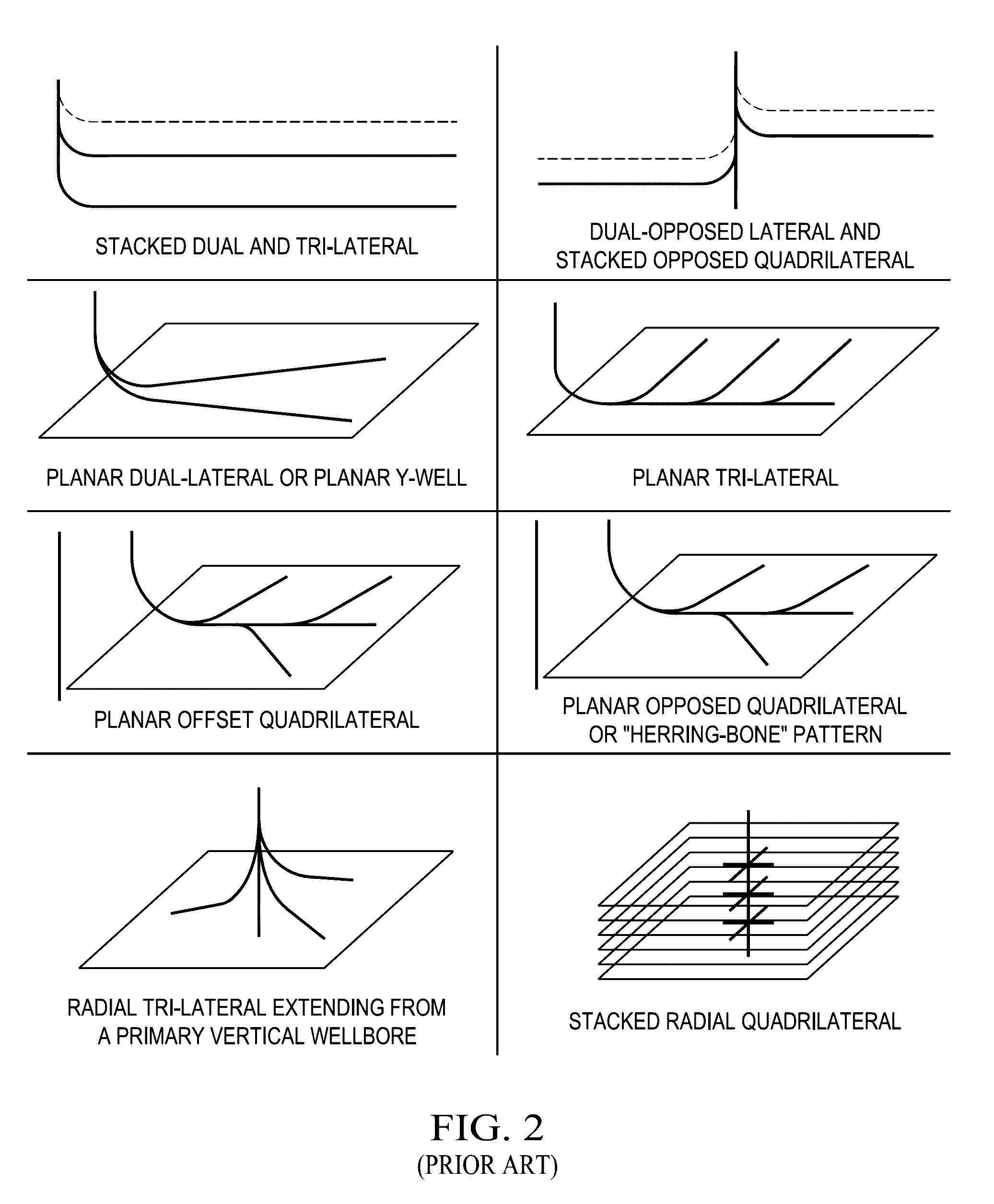Radial fishbone SAGD
a technology of radial fishbone and sagd, which is applied in the direction of well accessories, fluid removal, earthwork drilling and mining, etc., can solve the problems of increasing the cost of conversion of water or steam into high-quality steam, increasing the cost of conversion, so as to achieve maximum oil recovery, reduce land disturbance, surface footprint and number of wells, and achieve maximum recovery
- Summary
- Abstract
- Description
- Claims
- Application Information
AI Technical Summary
Benefits of technology
Problems solved by technology
Method used
Image
Examples
Embodiment Construction
[0074]The present disclosure provides a novel well configuration for SAGD oil production, which we refer to herein as a “radial fishbone” configuration, wherein all injectors and producers radiate outward from a single pad, and the wells have ribs covering the area therebetween.
[0075]Although particularly beneficial in gravity drainage techniques (e.g., with vertically stacked or offset stacked well pairs), this is not essential and the configuration could be used for horizontal sweeps as well. Thus, the upper injection wells could be eliminated and / or level with production wells. Of course, an injection well can also be used as a production well once fluid communication is established.
[0076]The well configuration can be used in any enhanced oil recovery techniques, including cyclic steam stimulations, SAGD, expanding solvent SAGD, polymer sweeps, water sweeps, and the like.
[0077]The ribs can be placed in any arrangement known in the art, depending on reservoir characteristics and t...
PUM
 Login to View More
Login to View More Abstract
Description
Claims
Application Information
 Login to View More
Login to View More - R&D Engineer
- R&D Manager
- IP Professional
- Industry Leading Data Capabilities
- Powerful AI technology
- Patent DNA Extraction
Browse by: Latest US Patents, China's latest patents, Technical Efficacy Thesaurus, Application Domain, Technology Topic, Popular Technical Reports.
© 2024 PatSnap. All rights reserved.Legal|Privacy policy|Modern Slavery Act Transparency Statement|Sitemap|About US| Contact US: help@patsnap.com










